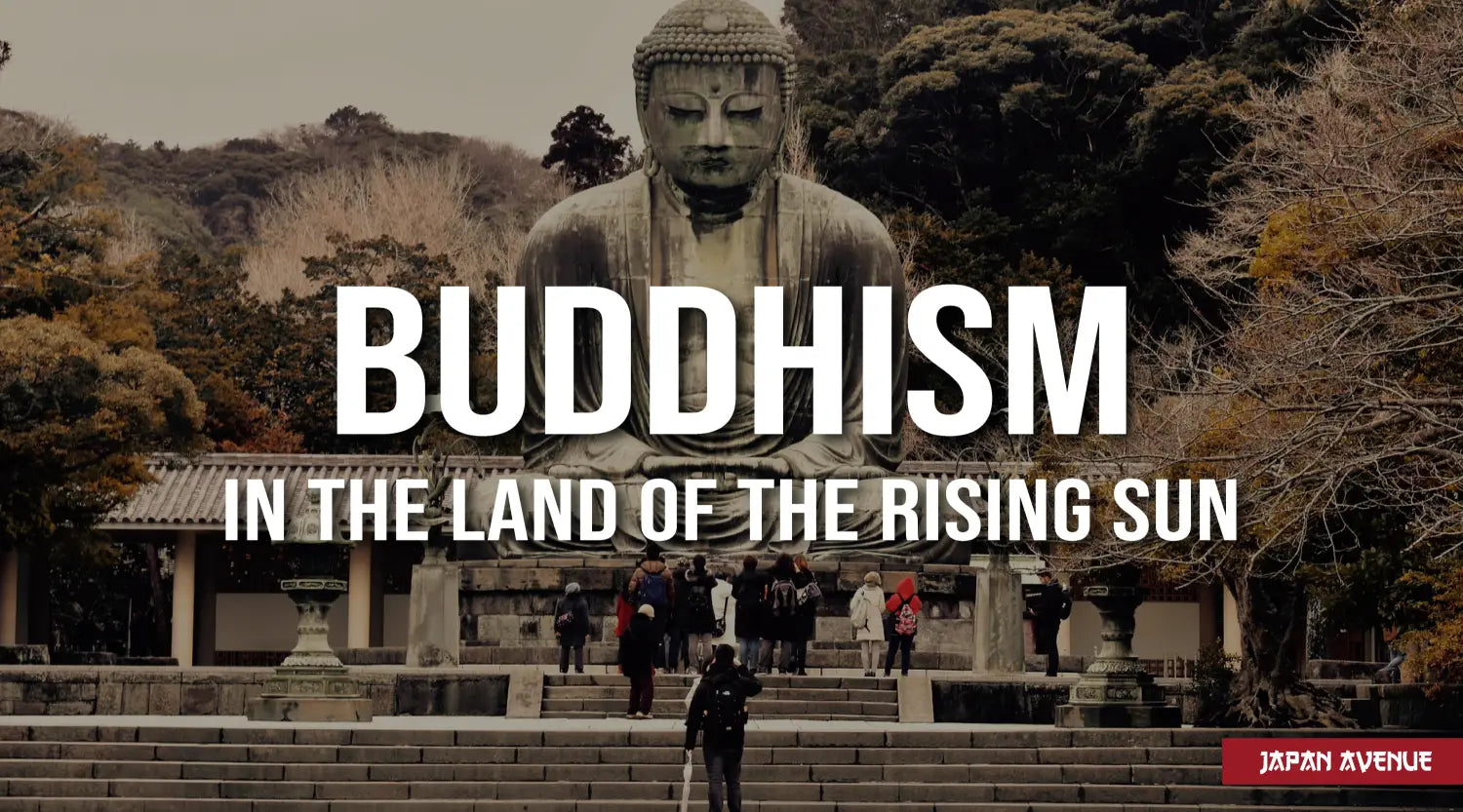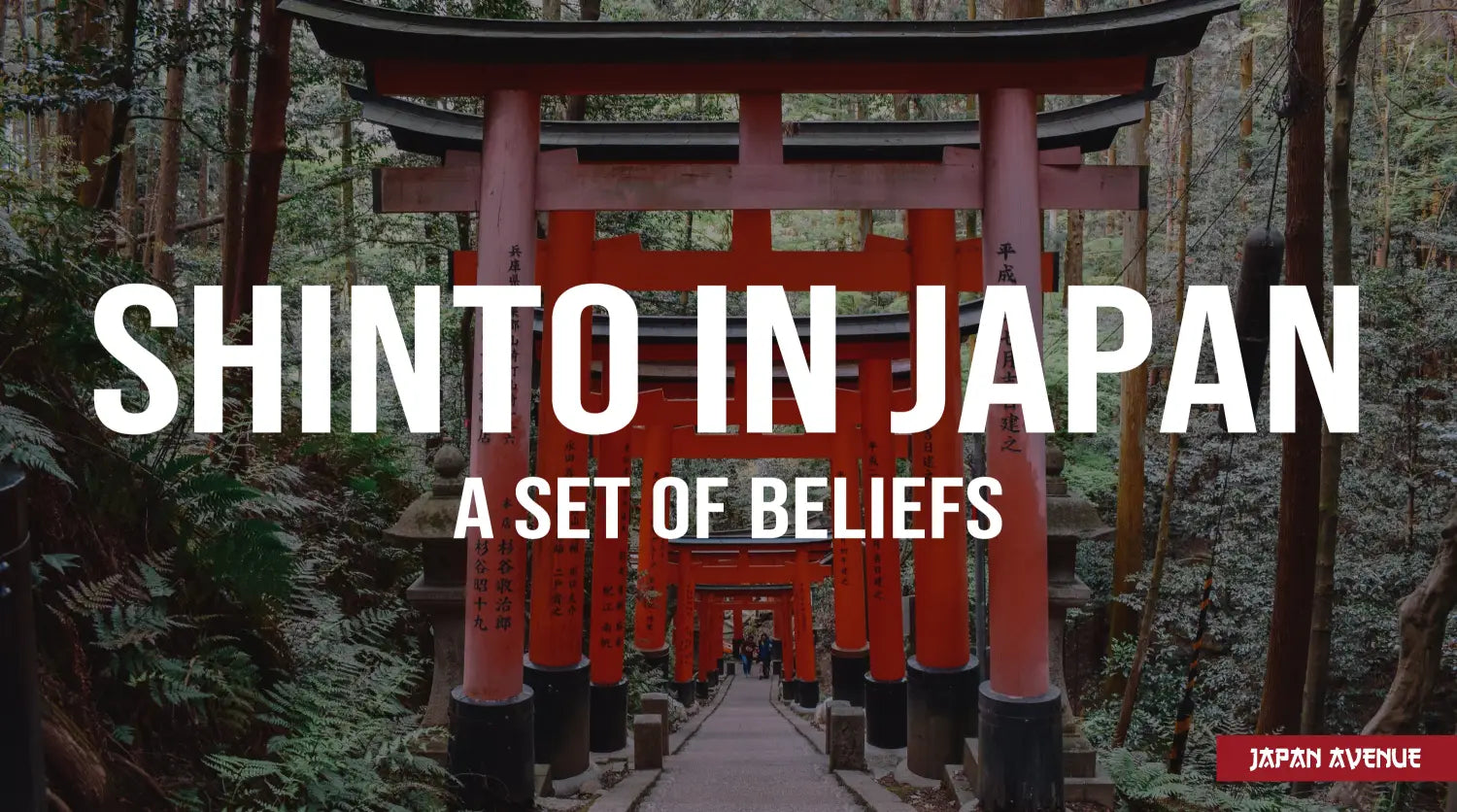In Japan, religions are more like cultural practices stemming from traditions than real beliefs. While Buddhism peacefully coexists with Shintoism, religious cults blend and complement each other harmoniously.
Buddhism in Japan was imported from China and Korea and based on Buddha's teachings. The Indian philosophy was adopted in the 6th century with a Japanese touch by merging it with Shinto beliefs. Through the different eras, many currents emerged, resulting in 13 schools of Buddhism.
Learn more about this religion, also known as the "way of wisdom", which is deeply rooted in the Japanese culture.
🇯🇵 Buddhism, an imported religion

Photo credits: https://think.iafor.org/arrival-acceptance-buddhism-japan/
While Shintoism is the native religion of Japan, Buddhism arrived quite late in the archipelago, due to the influence of China and Korea. Over time, it adapted to the country and its traditions while evolving through the Japanese culture.
How did Buddhism arrived in Japan?
Buddhist doctrine arrived in Japan in the 6th century, when Shintoism was the dominant religion in the Land of the Rising Sun. After having diversified in the neighboring countries, Buddhism arrived in the archipelago with the Taoist and Confucian currents.
According to the Nihon Shoki (compilation of texts on the origins and history of Japan), the Buddhist philosophy was presented to the emperor Kimmei by the Korean king of the Paekche kingdom. The latter had offered him a statue of Buddha, followed by Buddhist writings and a letter explaining the merits of the religion.
The notions of spiritual awakening, the cycle of life and death, and reincarnation were, until then, very distant from the beliefs of the Japanese people. Moreover, "Buddha's way" or Butsudo seduced with its novelty and some local clans considered it a real source of power.
The evolution of Buddhism in the archipelago

Painting depicting the semi-legendary prince Shōtoku (574-622), the first major patron of Buddhism in Japan. Source: wikiwand.com
At the end of the 6th century, after fierce struggles between the followers of Shintoism and the partisans of Buddhism (and Chinese culture), the Buddhist religion was adopted by the imperial court under the influence of the powerful Soga clan.
Later on, the doctrine was declared to be the state religion, thus at the service of the authorities, to protect the country and to ensure order among the population. Its role: to secure and to lead.
In the following century, the religion was widely imposed in the country by Prince Shotoku. He was appointed Regent under the reign of Empress Suiko and considered as the founder of Buddhism in Japan. He built many temples in the archipelago. Shotoku-Taishi is also known to have commented on various sutras.
At the beginning of its integration, Buddhism was particularly influenced by Chinese thoughts. Far from philosophical theories, it was known for its more or less magical protective powers against diseases, natural disasters and other threats.
Through the centuries, many schools and sects of Buddhism appeared. We can distinguish 3 major currents: hinayana, mahayana and vajrayana.
🏫 Japanese Buddhism: the different schools

The eastern pagoda of Enryaku-ji, headquarters of the Tendai Buddhist school in Japan. Source: youinjapan.net
There exists thirteen main schools of Buddhism in Japan.
The schools of the Nara period
- Hosso: « pure consciousness school », introduced by the monk Dosho
- Kegon: « flower garland school », imported by the monk Shen-Hsiang
- Ritsu: « discipline school » introduced by the Chinese monk Jianzhen
The schools of the Heian period
- Tendai: « Mount Tientai school », esoteric Buddhism very popular in Japan, founded by the monk Saicho
- Shingon: « true Word school » or great tantric school imported from China by the monk Kukai
Schools of the Kamakura period
- Nichiren Buddhism: « lotus school » introduced by the monk Nichiren
- Jodo: « Pure Land School » widespread in Japan, originating from the monk Tendai Honen
- Jodo shin: « true school of the Pure Land » is a major current of Buddhism stemming from the Pure Land and created by Shinran
- Yuzu nenbutsu: « school of Mutual Attention to the Buddha », part of the Japanese Pure Land Buddhism
- Ji: « hour school » which is part of the Amidist doctrines of the Pure Land
- Rinzai: school of Buddhism initiated by Myoan Eisai, the first Japanese Zen master, highly appreciated by warriors
- Soto: main school of Japanese Zen Buddhism imported by Dogen Zenji, which is based on silent meditation
- Obaku: the most recent school of Japanese Zen Buddhism, founded by the monk Ingen Ryuki
Japanese esoteric Buddhism

Source: amis-musee-cernuschi.org/bouddhisme-esoterique/
Esoteric Buddhism originates from the Shingon school and certain branches of the Tendai school. The esoteric teaching is part of the vajrayana or tantric Buddhism which comes from Tibet. However, Japanese Tantrism integrates Shinto practices. Japanese esoteric Buddhism emphasizes magical practices with mantras and dharanis, reputed for their protective powers.
Japanese Zen Buddhism
This is a branch of the Mahayana current that emphasizes meditation and the awakening posture of Siddhārtha Gautama, known as zazen. Zen is based on Chan, an Indian meditation that came from China. This is also the most well-known form of Buddhism in Europe.
Japanese Zen Buddhism has only one goal: to achieve spiritual awakening through physical and mental practice.
🧘 Buddhist practice in Japan
Today, many Japanese people call themselves secular and yet continue their religious practices. The modern movement of Japanese Buddhism, Soka Gakkai, or the lay form of Nichiren Buddhism, reflects this new conception of religion in Japan.
The temples and the monks

Senso-ji temple, the oldest Buddhist temple in the capital. Source: Wikipedia
In Japan, there exist many Buddhist temples. Together with Shinto shrines, these religious buildings are the most common. The word "temple" is translated as "tera" or "jiin" in Japanese, also, their name includes the suffix -dera or -ji. They can be recognized by their large roof and tiered door (romon). However, with Buddhist syncretism, many temples borrow Shinto architectural elements such as tori, and vice versa.
Among the most famous temples in Japan, we can mention the Kiyomizu-dera, dedicated to the goddess of mercy, and the Senso-ji, the oldest Buddhist temple in the capital. The Kinkakuji Temple, also called Golden Pavilion, and its heavenly gardens are also very popular and attract many visitors from all over the world.
In the entire history of Japanese Buddhism, Kukai is probably the most famous monk. He founded the Shingon school which is widespread today. It can be said that his spirit has greatly influenced the Japanese culture. Kukai also built the monastery of Mount Koya where many pilgrims attend every year.
Dokyo, follower of the Hosso-shu sect was also a very important political figure in the 8th century, known for his bad influence in the Court.
The warrior monk Benkei remained a figure of the Japanese folklore and a character of the kabuki and No. He would have been the accomplice of the great Minamoto no Yoshitsune, an illustrious samurai in the history of Japan.
Similarly, the monk Takuan Sôho, belonging to the Rinzai-shu school is known to have been the master of Musachi Mioyamoto, a great Japanese fencer.
There are also other well-known monks in Japan such as Ikkyu-Sojun, a craftsman of the Rinzai school, known for his poems.
The influence of Buddhism on Japanese culture

Japanese tea ceremony & Zen Buddhism. Source: WikiCommons
Buddhism greatly influenced the Japanese culture. It is reflected in the arts, the architecture as well as in the local way of life. Thus, we can find its heritage in the Japanese civilization through the code of honor of the warriors and in martial arts like Kyudo or Kendo.
Similarly, some Japanese traditions originate from Buddhism such as the famous tea ceremony. While Shintoism considers death as the end of existence, Buddhism offers another perception of this event with the presence of an afterlife and the principle of reincarnation. Moreover, the Buddhist religion is an important part of funeral ceremonies in Japan.
Arts have also been inspired by the way of wisdom through Japanese calligraphy, No theater, Ikebana floral art and Zen gardens.
To conclude, Buddhism in Japan finds its place alongside Shinto ideologies. More than just a religion, it is actually a philosophy that has brought great richness to Japanese culture through the centuries.



